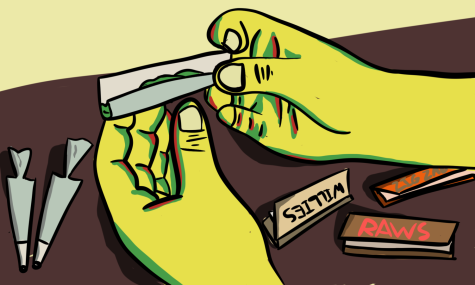With all of the recent promotion by the Colorado State University Health Network to get yourself tested for STDs, you might mistake an article on herpetology as another ploy to get yourself into that doctor’s office.
This week, I sat down with Alyssa Breda, a sophomore zoology major who is also a student in BZ329 – Herpetology, which is the study of reptiles and amphibians. The course is instructed by Jennifer Neuwald and Rachel Mueller.
Ad
“We talk pretty in-depth about how reptiles and amphibians live, how they communicate, how they move, their behaviors, environments and their different types of reproduction,” Breda said. “We just call them herps.”
This herpetology course requires students to participate in lab outside of class hours.
“In lab, we’re required to identify different herp species by their genus and species names,” Breda said. “All the herps are dead and in jars and we take them out and differentiate between them.”
While a portion of the class involves categorization and examination of the deceased herps, Breda said the majority involves learning about how specific reptiles and amphibians live in their habitats.
“Sea turtles have this thing called a magnetic map, which is something that basically gives them an internal compass and allows them to sense the magnetic field of the earth,” Breda said. “They know directionality to the point where female sea turtles will return to the beach that they imprinted on when they were born to lay their own eggs every year.”
Speaking of eggs, frogs lay them, too. According to Breda, some frogs exhibit sneaky behavior when trying to mate.
“One example is clutch piracy, which is when a male frog tries to latch onto a female while she’s already mating with another male,” Breda said. “The second attached male tries to fertilize as many eggs as possible that the other male has not yet fertilized, so it’s basically cockblocking.”
Breda also shared that some male frogs are referred to as satellite males. Satellite males camp out and let other males do the work of using mating calls to communicate with potential female mates. As soon as the attracted females make an appearance, the satellite males will sneak out of hiding and steal the lady frog from the original male.
“Satellite males have an advantage,” Breda said. “They don’t have to exert the massive amounts of energy for vocal communication because they rely on the work of other males.”
Ad
In addition, a specific species of frog, from the family Dendrobatidae, is known as the poison dart frog and consumes toxic ants. Their skin becomes toxic due to their specialized diet, which means that without consuming the toxic ants, their skin is not poisonous. Although their toxic skin in a natural environment serves as protection from possible predators, these frogs and others of similar species have much more to worry about than simply being eaten.
“Many of these species of dendrobatids are threatened or endangered,” Breda said. “They inhabit tropical forests from Costa Rica to Brazil, both of which are encountering a lot of habitat destruction due to deforestation.”
Breda then commented on a unique characteristic some herps – specifically snakes and chameleons – utilize in an effective manner.
“Snakes use their tongues to pick up and sense chemical signals, and their forked tongues allow them to use ‘directionality,’” Breda said. “If the right fork of their tongue picked up more scent molecules of their prey than their left fork, then they will be guided to the right to locate the prey.”
Likewise, chameleons share the trait of a talented tongue.
“Chameleons catch their prey using their ballistic tongues, which allow their muscles to contract and pull the tongue forward to catch the prey,” Breda said. “Their tongues are also prehensile, which means ‘being able to grab.’”
While concluding our mini-lesson, Breda shared one final interesting fact.
“Birds and crocodiles share a common ancestor, which makes them most closely related to each other,” Breda said. “Birds are actually classified as reptiles, and they’re the closest living relatives to dinosaurs.”
Collegian Reporter Jessie Trudell can be reached at news@collegian.com or on Twitter @JessieTrudell.







